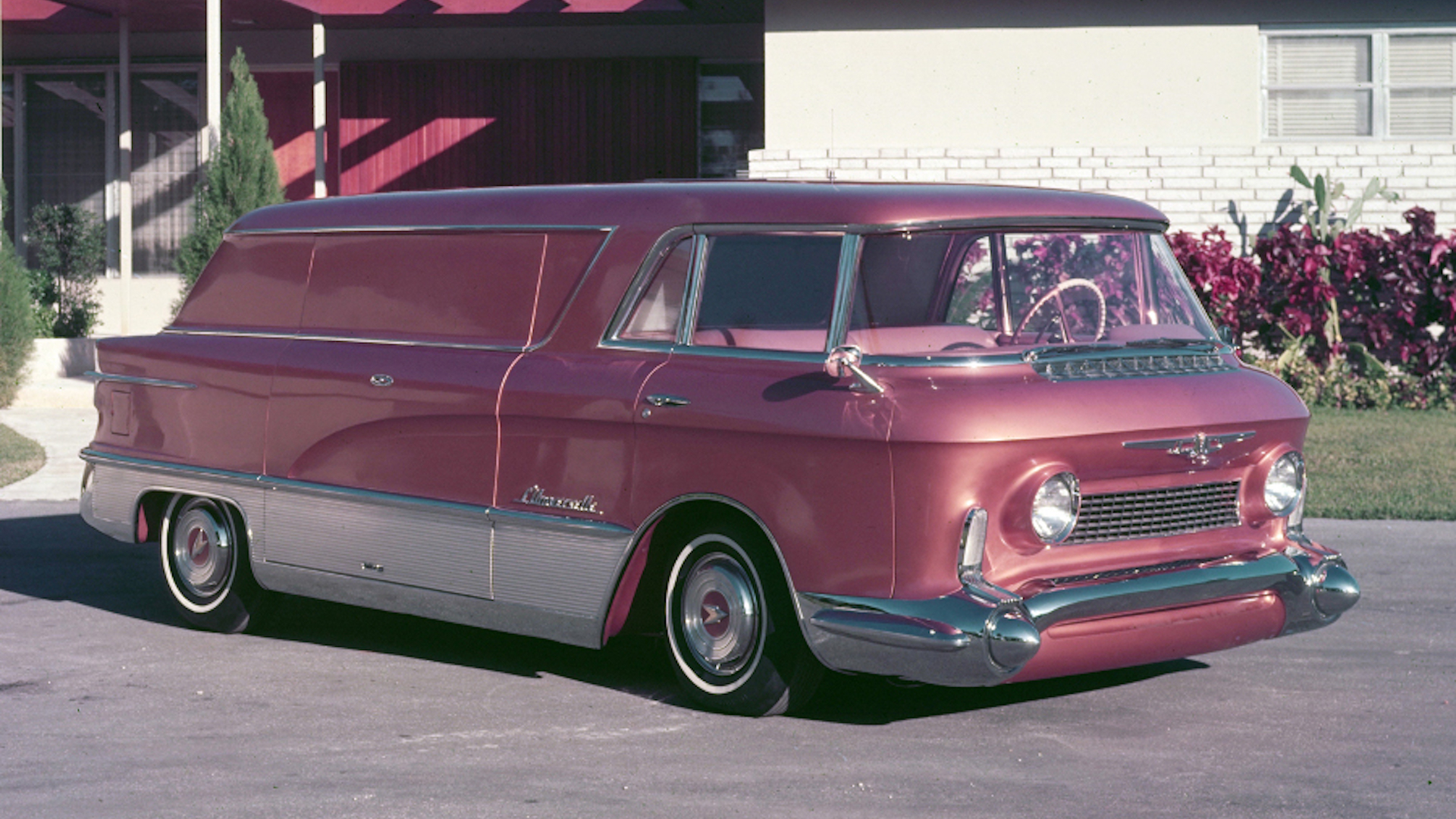

Front-wheel drive isn’t the car industry’s standard without reason. Its tight packaging increases cabin space, its reduced rotating mass helps with gas mileage, and for your average driver, it’s just easier to control. But before the blueprint for the modern front-wheel-drive economy car was established in the late 20th century, front-drive vehicle designs tended to be a bit more peculiar. To understand what we mean, look only to early front-wheel-drive cars, like the 1955 Citroën DS, 1948 Saab 92, and on our side of the Atlantic, the 1955 GMC L’Universelle.
Obviously translating from French as “the universal,” the GMC L’Universelle was a then-radical concept for a highly configurable van, one that could suit a broad range of specialty roles.


“Although the basic design of L’Universelle is a panel delivery, minor manufacturing changes can convert it into a small bus, taxi, station wagon, or sportsman’s car,” commented Philip Monaghan, then Vice President of General Motors, as reported by Motortrend.
The design was reportedly overseen by Harley Earl, who commissioned the first Chevrolet Corvette concept, and Charles Jordan, who later captained Cadillac’s design bureau during its fin-crazed days. Together, they came up with a design for a panel van featuring gullwing doors, which opened up on 173 cubic feet of cargo space. That was a good 15 better than Ford F-100 panel vans produced later that decade managed according to How Stuff Works. Earl and Jordan found that extra space by concentrating the L’Universelle’s drivetrain around the front axle, with a 287 cubic-inch (4.7-liter) Pontiac V8 branded as a GMC 288 just behind the front wheels, and a transaxle between them.

This gave the L’Universelle superb 54-46 weight distribution, but also introduced several engineering challenges, to which GM chose some interesting solutions. With no space for a radiator or its ducting up front, engineers handled cooling by mounting the radiator at an angle in a shaft that appeared to connect to the driver’s-side wheel well to the roof, where a fan sucked hot air out the top. Having the cabin ahead of the front axle also complicated the steering linkage, which used multiple gearsets to transfer turning force to the steering rack.
The difficulty associated with making these work may have been part of why GMC didn’t bother mechanically finishing the L’Universelle concept; Hemmings reports the van lacked an ignition system, and that its transaxle was nonfunctional. Making a running, driving L’Universelle may have been pointless anyway, as the vehicle’s payload rating is said to have been a scant 1,000 pounds, and even the puny Ram 700 can tote around over 1,650.

For reasons now obvious, the L’Universelle withered on the vine, its shortcomings outweighing the advantages of front-wheel drive. Earl and Jordan, though, would probably be pleased to know that their ideas later found their way into mass-produced vans like the Volkswagen Transporter—albeit with the driver behind the front axle, rather than perched feet in front of it like the poor, seasick drivers of the Schnibbelmobil.
Got a tip? Send us a note: tips@thedrive.com